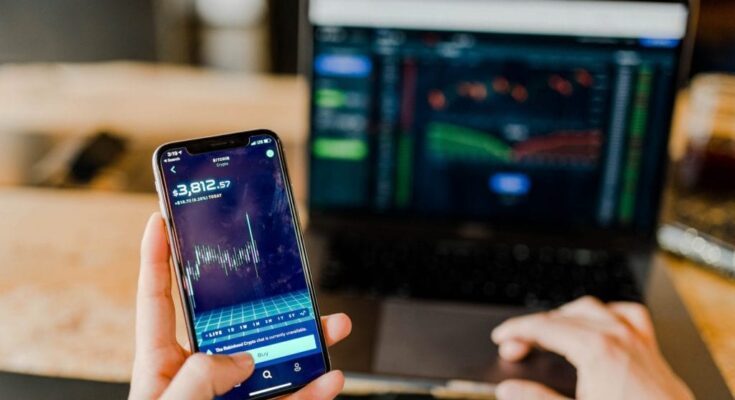What Is Votality
Contents
To the best of our knowledge, all content is accurate as of the date posted, though offers contained herein may no longer be available. The opinions expressed are the author’s alone and have not been provided, approved, or otherwise endorsed by our partners. “When the market is down, pull money from those and wait for the market to rebound before withdrawing from your portfolio,” says Benjamin Offit, CFP, an advisor in Towson, Md. Buy an option on a stock if you think it will get more volatile. And volatility is a useful factor when considering how to mitigate risk. But conflating the two could severely inhibit the earning capabilities of your portfolio.

- The Cboe Volatility Index, or VIX, is an index created by Cboe Global Markets, which shows the market’s expectation of 30-day volatility.
- Another way of saying it is that option premiums are rich when implied volatility is high.
- Volatility itself has no defined numerical value, but it is often described using vapor pressures or boiling points .
- Watch how volatility affects the total amount of money you’ll have at the end of each year, based on the returns above.
And it’s important to understand that price and value are not identical. While reams can be written about managing risk, there are two key strategies investors need to understand to manage and mitigate risk. Interest rate risk is the possibility that interest rate changes could negatively impact an investment’s value. Risk nearly always describes the possibility of losing money.
At a given temperature and pressure, a substance with high volatility is more likely to exist as a vapour, while a substance with low volatility is more likely to be a liquid or solid. Volatility can also describe the tendency of a vapor to condense into a liquid or solid; less volatile substances will more readily condense from a vapor than highly volatile ones. Differences in volatility can be observed by comparing how fast substances within a group evaporate when exposed to the atmosphere. A highly volatile substance such as rubbing alcohol will quickly evaporate, while a substance with low volatility such as vegetable oil will remain condensed. In general, solids are much less volatile than liquids, but there are some exceptions.
At the same time, investors who want to avoid tax will sell to make profits on the increase in capital gains tax. Due to asset volatility, stock market investors try to diversify their portfolios. In other words, they buy various stocks, bonds, shares of funds so that price fluctuations do not “eat up” all their savings. Thanks to this, they make money on securities, and don’t monitor the volatility of one purchased asset every day. This material has been presented for informational and educational purposes only.
The volatile nature of an asset is directly proportional to the risk it bears. This means that the investment can either bring huge profits or devastating losses. Note that an unstable market does not automatically signal losses but maybe relatively risky. The world stock market is a set of exchanges and markets…
Volatility often refers to the amount of uncertainty or risk related to the size of changes in a security’s value. A higher volatility means that a security’s value can potentially be spread out over a larger range of values. This means that the price of the security can change dramatically over a short time period in either direction. A lower volatility means that a security’s value does not fluctuate dramatically, and tends to be more steady. In finance, volatility (usually denoted by σ) is the degree of variation of a trading price series over time, usually measured by the standard deviation of logarithmic returns. Market volatility isn’t a concern unless you need to liquidate an investment, because you may be obliged to sell assets if the market falls.
A https://bigbostrade.com/ 75 index chart aids in predicting market cycles by measuring the impact of fear as a primary ‘fear barometer’. VIX readings above 30 typically indicate increased investor fear, while readings below 30 generally indicate general complacency. Then, calculate volatility as a standard deviation by taking a square root. The more the price of a security moves, the more likely it is that you will lose money on the stock as well.
If you need money shortly, don’t put it in the market, where volatility can make it difficult to get it out quickly. But, in the long run, volatility is a necessary aspect of achieving big growth. Volatility in an industry or sector might be triggered by certain occurrences.
“Not a get-rich-quick strategy but a real way to build your wealth over time and manage your risk”
The origin country might see a https://forexarticles.net/ market, and hearing the news, investors panic and start buying or selling in other parts of the world. It can lead to a string of actions that result in unfavorable outcomes. Using a simplification of the above formula it is possible to estimate annualized volatility based solely on approximate observations. Suppose you notice that a market price index, which has a current value near 10,000, has moved about 100 points a day, on average, for many days.

A measure of “1.25” suggests it is 25% more volatile than the index. Volatility is the frequent price fluctuations experienced by underlying security in a financial market. It is otherwise the rate at which the price rapidly increases or decreases. When the prices hit new highs and lows in a short period, the asset is said to have high volatility and is, therefore, riskier to trade.
https://forex-world.net/ in the securities markets means large swings in price over a short period of time. Technically, volatility is the statistical measure of the security’s possible investment returns. In simpler terms, it is the degree of variation in its trading price over time. If a security has large price swings over short time periods it’s volatile and unpredictable. The most simple definition of volatility is a reflection of the degree to which price moves.
Market Talks We Need To Listen: A Detailed Valuation Report on Hero MotoCorp
A security is said to have a higher level of volatility when its value can change dramatically in a short space of time. Volatility is measured using the tool of ‘standard deviation’, which measures an asset’s departure from the average. The weight of prices determine whether investors believe the S&P 500 index will increase or decrease in value in the near future. It provides investors an insight into how professionals in the stock market think about the prevailing conditions. This especially helps short-term traders to know where the market is headed and make use of the situation. When market declines occur, market participants tend to overreact and buy Put options to cover their positions.

Bullish markets are known for their low volatility, whereas bearish (downward-trending) markets are known for their unpredictable price movements, which are frequently downward. Since we know the prices of options from the options chain, we can solve the volatility equation. It is different from the implied volatility of an individual stock such as General Electric . This can be determined by looking at the standard deviation of price from its mean. Today, we are discussing what is considered high implied volatility.
Market Volatility Explained
The slope of a line made from a regression of data sets is known as a beta in statistics. In finance, each of these data points reflects the performance of a single stock relative to the market as a whole. The activity of a security’s returns as they respond to market fluctuations is adequately described by beta. The standard deviation of a security’s price is a measure of its price dispersion. This statistic measures how much a stock’s price has deviated from the mean over a certain period. It is determined by subtracting the mean cost for the specified time from each price point.

A ratio of 0.5 implies that the option is undervalued and is currently selling at 50% lesser than its real value. Thus, an option with a ratio that is less than 1 will be a bargain for a buyer. Historically, the normal levels of VIX are in the low 20s, meaning the S&P 500 will differ from its average growth rate by no more than 20% most of the time. While heightened volatility can be a sign of trouble, it’s all but inevitable in long-term investing—and it may actually be one of the keys to investing success. The emotional status of traders is one reasonwhy gas prices are often so high.
If prices are randomly sampled from a normal distribution, then about 68% of all data values will fall within one standard deviation. Ninety-five percent of data values will fall within two standard deviations (2 x 2.87 in our example), and 99.7% of all values will fall within three standard deviations (3 x 2.87). In this case, the values of $1 to $10 are not randomly distributed on a bell curve; rather. Therefore, the expected 68%–95%º–99.7% percentages do not hold. Despite this limitation, traders frequently use standard deviation, as price returns data sets often resemble more of a normal distribution than in the given example. A measure of “1” means the stock price moves almost perfectly in line with the S&P 500.
What Is Volatility?
In determining the pricing of options contracts, implied volatility is a crucial measure. Analysts believe in a variety of elements when forecasting future price changes in assets. Although it is presented in percentages, implied volatility does not indicate which way prices will go. The VIX—also known as the “fear index”—is the most well-known measure of stock market volatility. It gauges investors’ expectations about the movement of stock prices over the next 30 days based on S&P 500 options trading.
Calculating Volatility (in Stock Market)
That’s why investors must have an emergency reserve of three to six months’ worth of living expenses. Implied volatility measures the market’s expected movement of an underlying based on current option prices. Acorns does not provide access to invest directly in Bitcoin. Bitcoin exposure is provided through the ETF BITO, which invests in Bitcoin futures. This is considered a high-risk investment given the speculative and volatile nature.
Yet, even in the forecasts, the laws of mathematics work, which we will discuss later in this article. Most of the time, the stock market is fairly calm, interspersed with briefer periods of above-average market volatility. Stock prices aren’t generally bouncing around constantly—there are long periods of not much excitement, followed by short periods with big moves up or down. These moments skew average volatility higher than it actually would be most days.